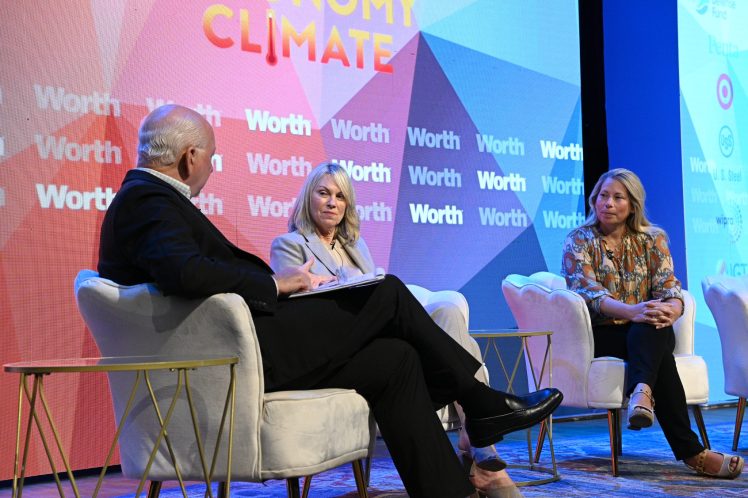Read excerpts from the discussion below.
KIRKPATRICK: How do you look at the impact of systems like Twitter or Facebook on large organizations?
DORSEY: Quite simply there are now amazing feedback loops. When I release a new product or a new ad campaign or a new policy or law, I can get instant feedback on what people are thinking and how they react to it. I can use that information to tune and to better my policies or my product or my company, all in real time. When I was deciding on a university, I was deciding between political science and computer science. With political science I could help write laws and policies and see the effect of them maybe within eight years, whereas with programming I could model similar laws, policies, rules, and see the effect immediately.
KIRKPATRICK: Why are so many organizations and leaders still operating in the old way?
DORSEY: There is probably an equal mix of stubbornness and ignorance. You hear messages that Twitter is important, that Facebook is important, that HTML5 is important, but how do you actually begin? There’s no easy way. It’s not fun all the time to be self-reflective. In many cases it means you have to do work.
KIRKPATRICK: How do you balance working at two companies simultaneously?
DORSEY: I theme my days. On Monday, I focus on management—we have our directional meeting at Square and our opcom [operations committee] meeting at Twitter. I do my management one-on-ones that day. Tuesday is focused on product. Wednesday is marketing and communication and growth. Thursday is focused on developers and partnerships and Friday is the company and culture and recruiting. Saturday I take off. I hike. Sunday is reflection, feedback, and strategy.
KIRKPATRICK: How many hours each day?
DORSEY: Eight hours at each one. I live across the street.
KIRKPATRICK: How do you think of the two companies as similar?
DORSEY: They’re both utilities that an individual or organization can pick up and use immediately. With Twitter, you can pick up any phone, any device and use it to broadcast to the world immediately, as an individual or as the largest government in the world. You can also use it to figure out what other people are doing, what’s happening in the world right now. With Square, it’s the ability to instantly start a business. Ninety percent of this country pays with plastic. But that form of payment has been cut off for many small merchants and sole proprietorships. Square enables people to immediately start accepting credit cards with a tool they already have - their mobile phone. It’s not just individuals; it’s small and medium and large businesses. Both companies are true utilities, and people can do whatever they want with them. That’s the best sort of technology—a foundational utility that people can come to and build on top of.
KIRKPATRICK: How should we imagine Square in five years?
DORSEY: We started out just accepting credit cards. We realized it was even more interesting to build a full point-of-sale system that handled every payment device in the payer’s pocket. If you come with a checkbook or with cash, we accept that and offer a receipt. If you treat the receipt as a publishing medium, as a communication channel between the merchant and the payer, then the potential is just amazing. Payment gets to something very interesting around that merchant/payer communication. Our first foray into it is this product we launched in May called Card Case. The application lets you see all the merchants around you that accept Square. You can open a card for each merchant. You see their full menu, their hours, or their Tweets. Most importantly, you’ve linked your credit card so you can automatically open a tab with that merchant. When you walk up to the counter, your name, picture, and last orders appear on the register. Without bringing out my phone or my wallet, I can say, “Put a cappuccino on Jack." They verify my picture is me, hit the button, and done. I didn’t have to swipe a card. I didn’t have to fumble around with cash.
KIRKPATRICK: How does it compare to NFC, near field communications, where you hold up your cell phone to pay?
DORSEY: It’s not the most human action to wave a device at another device and wait for a beep. I would rather just use my name to pay. “I’m Jack. This is me.” NFC only gives the merchant identity after the transaction is calculated, which takes away the potential for the merchant to delight the customer. With Card Case, they know your name. They greet you with a smile. They know your order. It’s amazing for building loyalty.
STEVEN SPRAGUE, WAVE SYSTEMS (from audience): Many organizations would like to use Twitter internally. How could I use it in a private controlled environment?
DORSEY: We’ve focused more on the public conversation than the private conversation. We have one method for private conversation, which is a direct, one-to-one message. We need to invest a lot more time and energy in determining what happens with groups and private communication.
BESSIE LEE, GROUPM CHINA (from audience): Twitter, Facebook, and YouTube have been blocked in China for years. Have you given up China?
DORSEY: We aren’t allowed to compete in the country, but we are not giving up. It comes down to a trade issue. We would love to make sure everyone can access Twitter in the easiest way possible, from whatever device, wherever they are, but we need to be able to compete first.





